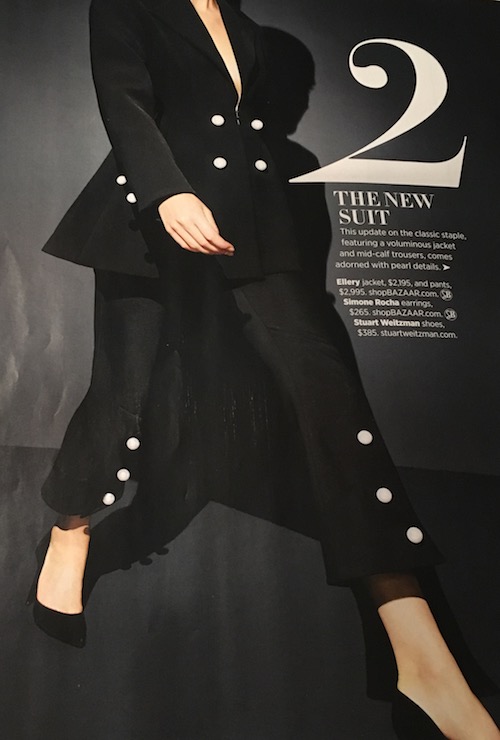Articles and News
Q&A With Jennifer Heebner, New Executive Director of CPAA, On Profiting From Pearls | January 17, 2018 (0 comments)
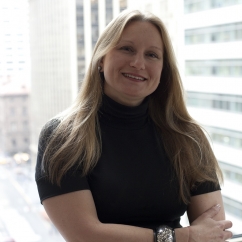
Merrick, NY—Jennifer Heebner (left), a longtime industry journalist and unabashed lover of pearls, was recently named part-time executive director of the Cultured Pearl Association of America. In an exclusive Q&A with The Centurion, she talks about the “pearl moment” in fashion (hint: it couldn’t be more not-Barbara Bush!), why pearls are perfect for Millennials, and how her love for pearls and unique perspective can help you sell more and profit more from this often-overlooked category.
The Centurion: Tell us about your new role with CPAA.
Jennifer Heebner: In this position, I have the opportunity to write about, talk about, and create cool promotions about pearls! When the board approached me to see if I might be interested in a position like this, I said I would only if we could try unconventional ideas like original pearl content, social media, and enhanced outreach to designers and stores to work more with pearls. The board said yes—and that I got to work with longtime dear friend and CPAA public relations and marketing director, Kathy Grenier—so I said, sign me up!
The Centurion: Tell us about your own passion for pearls.
Heebner: I have loved pearls—particularly Tahitians—for years! I just get lost in that luster! I’m mesmerized by it, and adore the peacock colors of the Pinctada margaritifera oysters that give birth to them. When I took jewelry-making classes many years ago as a way to better understand the people I was interviewing, pearls were among the first types of gems I purchased for myself. I started drilling loose pearls and have made many a pearl necklace for myself and others. This has only grown through the years, and I’m so glad it has!! Pearls have led me to wonderful people and experiences.
The Centurion: Pearls are always classic, but right now fashion is having a huge pearl moment, where we’re seeing pearls used in truly new ways—as buttons, shoe adornment, and more. What do you think is driving this moment? Why has the fashion industry become so enamored of pearls?
Heebner: I wonder if this is happening because of all the innovations we’ve seen in pearls over the past 10 or so years. Growers have been experimenting, and that has given rise to fun varieties like fireballs (freshwaters with a flame-like appearance), soufflés (lighter-in-weight freshwater pearls), increasingly more beautiful and natural colors of freshwaters, and metallic pearls, among others. As these unusual pearls make their way into markets around the world, they inspire artists—jewelry designers and couturiers—to think differently about them. And thank heavens for that; we need to eliminate that Barbara Bush bland-white-strand image ASAP! The luster of pearls and pearl shells create a soft, understated effect that has a wider appeal now than big bling among those who aren’t interested in flaunting wealth.
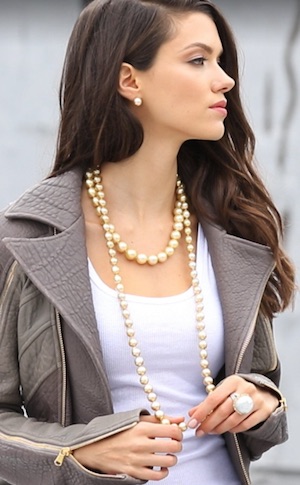
Above: Even classic strands, when colors are distinctive and sizes and lengths are mixed, appeal to young, fashion-forward women. Image: Tara Pearls. Below, fashion's "pearl moment," featuring pearl adornments on shoes and apparel. Images, Harpers' Bazaar.
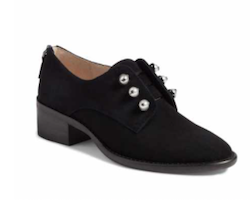
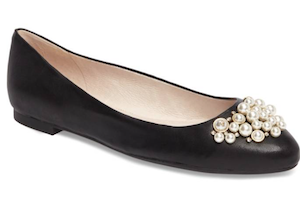
The Centurion: How do you think pearls resonate with young, fashion-forward women? What is drawing them to pearls and what are they looking for in their pearl jewelry?
Heebner: Emerging collectors want one-of-a-kinds, and that’s easy to offer with pearls given the variety of organic shapes available. Young consumers also want a great story, and many want to know that their purchases are helping a bigger cause. This is where pearls dominate the market—pearls have the best story in all of jewelry! Many come from remote, gorgeous places, and only grow in pristine environments. Pearls often offer employment to people who live in places with few job opportunities. Pearls don’t involve mining or destruction of landscapes. Beautiful pearls are the result of clean, happy, and healthy aquatic environments.
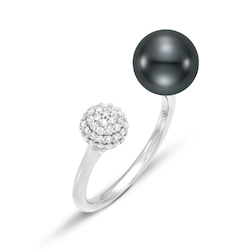
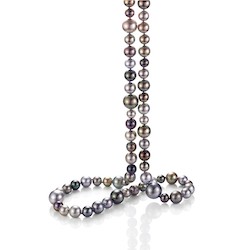
A modern open ring with Tahitian pearl and a strand of mixed Tahitians. Both, Mastoloni
The Centurion: How could the modern uses for pearls become a gateway to bring younger, hipper customers into luxury jewelry stores? Do you think it’s odd to think of pearls—the ultimate granny classic—as possibly being a potential gateway piece?
Heebner: Beautiful pearls are often a lot more affordable than pretty gems of other types. That’s how I got hooked on them: they were pretty and I could afford them! So they are an ideal entry-level jewelry purchase. You get a lot for your money—uniqueness, beauty, variety—with pearls. And with all the cool ways that designers are using pearls today, there is no doubt in my mind that they do attract young, hip consumers.
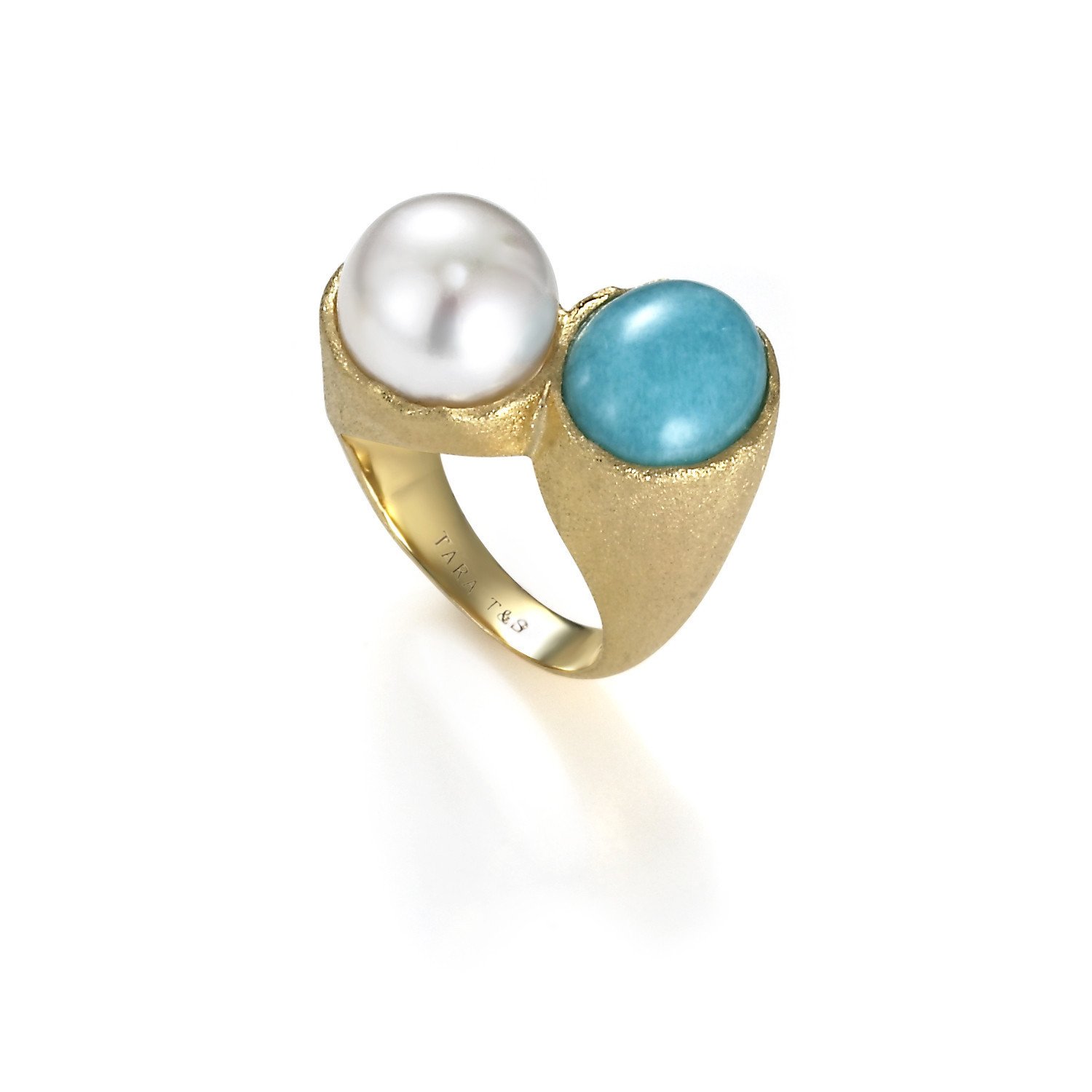
Modern Collection ring with pearl and Amazonite in yellow gold, from Tara.
The Centurion: What, if any obstacles are there to growing the pearl market (no pun intended?)
Heebner: The biggest obstacle to more pearl sales? Store staffers. They need to be better educated in order to become passionate about pearls. Passion is key to pearl sales. People need to understand the miracle of their growth, the gorgeous places they grow in, the people they help, and the environments they help to keep pristine. CPAA is hoping to create a much bigger universe of those who are passionate about pearls through all of our reinvigorated efforts.
The Centurion: If you were a luxury jeweler looking to attract hip young fashionistas with a collection created for them, what would that collection look like?
Heebner: It would include lots of funky baroque-shape pearls, keshi, natural-color freshwaters, lots of stacking pieces and layering necklaces, and lots of modern options—like front-to-back earrings and open-style rings—with retail prices under $5,000. Pieces have to be fun, contemporary, and accessible.
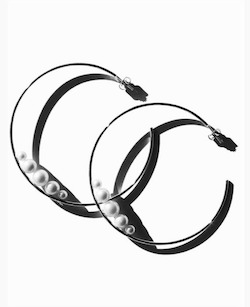
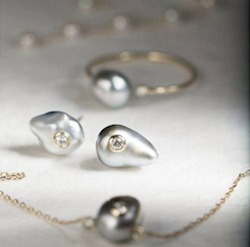
Pearls elevate simple hoop earrings, and baroque Tahitian pearls are an affordable entry for consumers who want something unique. Both, Mizuki.
The Centurion: To really build that kind of clientele, what do you think luxury jewelers need to do most?
Heebner: Keep an open mind, and a visit innovative designers that specialize in pearls. Those are the lines that will attract the next generation of pearl collectors. Retailers with custom departments can also buy loose pearls or hanks in Tucson and have custom pearl parties in stores. A little creativity and innovation goes a long way here!
The Centurion: What do you hope to accomplish in your new role as part-time executive director of CPAA?
Heebner: We have a lot of goals, but the first move I wanted to make was to talk to members and ask them what they want to see change. So, I’m working through the member list along with juggling some other tasks. Already, we have reimagined the website, created some original content which we’ll add to weekly, enhanced member benefits, and moving forward we’ll create more opportunities for designers to work with pearls and for specific retailers to sell them. We want to see ideas come full circle, from product creation to landing in the hands of a pearl collector.
Our biggest promotional efforts, though, lie in the promoting our incredible Pearls As One (PAO) course, which was spearheaded by Jeremy Shepherd of PearlParadise.com. PAO is the most comprehensive pearl education available today! It’s an online course that’s easy to take, constantly updated, and you can probably take the course for free since so many companies are sponsoring students and employees to take it. Email Jeremy@pearlparadise.com for more information.
One of my favorite projects to date is a new member benefit: custom pearl artwork. We’re reaching out to fashion illustrators to make custom pearl art pieces for our members to use on social media, in correspondence, to put on promotional items, and more. The artists will interpret pearls through specific scenes, custom quotes, and hashtags in their own voice but with our chosen pearls and pearl jewelry. I feel this is a fun, unexpected, and whimsical approach to pearls and pearl jewelry that will drive fresh interest in the category and an insatiable “gotta-have-it” mindset because the art will be so irresistibly cute!
The Centurion: What kind of retailer and marketing support do you envision going forward? Do you plan to focus on the traditional jewelry industry or are you planning outreach to either nontraditional retailers such as online, or to clothing boutiques, et cetera?
Heebner: I think it depends on what industry and members want from us, what they will find useful in their mission to better sell pearls. We’re brainstorming innovative ways to help, but we’re also wide open to other people’s ideas. In terms of audience, we’re appealing to anyone who loves pearls—that includes retailers, designers, and consumers.
As far as how we spend our marketing dollars, we’re definitely exploring the most cost-effective ways to reach consumers because that is what’s needed to drive more pearl sales. Some of our efforts will be placed on social media and influencers, but we also plan to drive more interest to pearls through our own original content and a 30,000-member proprietary mailing list of trade and consumer subscribers.
We’re also looking for ways to put more pearls in the hands of designers to build collections around, and then to help them pre-arrange for stores to sell them. We definitely want to see pieces sell, not just made. So, we’ll follow the journey of collections into consumers’ jewelry boxes.








